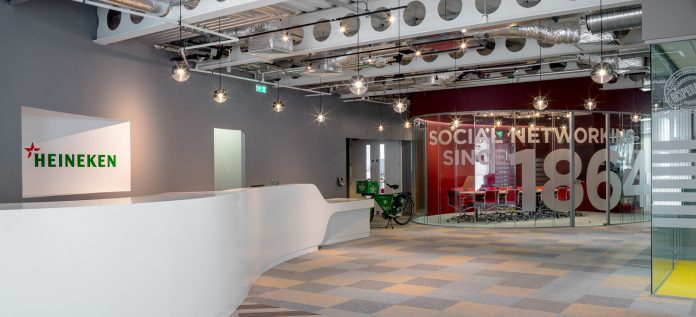“A company has someone to look after money, strategy, and marketing etc. But soon there will be another title. A Chief Wellbeing Officer to look after humans. To create a culture that stops burnout, to create a culture of learning, to create a culture of thinking long-term. To put people before anything else. The pioneers already have them. They may call them another name, but they are one step ahead.”
Michael Townsend Williams
When I had the idea of Chief Wellbeing Officer for the title of my last book, inspired by the above quote from Michael Townsend Williams (and now of course the title of this column) it was all about envisioning a future state. The vision that wellbeing rise up the business agenda – becoming a more strategic concern. What better way than putting the words “Chief” and “Officer” either side?
If anyone used it to create or support a Chief Wellbeing Officer position in a company, then fantastic. Yet equally as valuable in my view was anyone being inspired by the title and intention to elevate wellbeing through their existing role, be that in human resources, learning & development, facilities management or health and safety.
As wellbeing is increasingly recognized as being important to business success, so different business functions and units may have something to add, some piece of the puzzle. Who will lead the charge? Who owns wellbeing in the organisation?
This is a question that could be asked in different contexts and my first reflections come from Heineken where Fernando Lallana, a Spaniard working for a Dutch company who has just returned from several years working in Ireland, gives us his views on driving a more wellbeing-focused operation.
Moving from procurement to his current role as head of workplace services and reporting to the HR director of Heineken Spain, Fernando sees a series of wellbeing layers in an organization. The first and most basic layer is essentially health and safety. Ensuring people have preventative and treatment-based healthcare services, and that they work in a safe environment – especially important where many employees work in a plant setting.
This is complemented by another layer which looks at different elements including nutrition, the workspace, exercise and financial aspects. The top layer is termed ‘happiness’ which Fernando sees as including the purpose and Corporate Social Responsibility related elements such as environment and community.
So is this an organizational design issue? Each of the above layers includes actions and initiatives that are carried out in different areas of Heineken. If we return to the opening quote from Williams, “looking after humans” though generic enough to be anyone’s responsibility is arguably the domain of HR, as stated also by Heineken’s Lallana. Yet “culture” “learning” and “thinking long-term” may sit in other parts of an organization.
Is ownership important? When I was interviewed about Chief Wellbeing Officer for the Spanish business newspaper Expansión in December last year I caught some of the online reaction from some in the Occupational Health & Safety community evidently distressed that they had been omitted from the discussion. Weren’t they after all the business unit that looks after the wellbeing of employees? A part of the puzzle certainly, but when countless Health & Safety company functions worldwide prohibit the use of stair climbing to minimize the risk of accidents it shows they don’t have the necessary mindset to lead the charge for a holistic treatment of wellbeing at work.
Lawrence Prusak, a leading researcher in the field of knowledge management at the turn of the millennium remarked that the practice might be “so thoroughly adopted—so much a natural part of how people organize work—that it eventually becomes invisible.” Similar sentiments could be applied to areas including innovation and safety. Depending on the sector and culture of the company such focus areas become the natural way of doing things and so everyone, when the organization becomes sufficiently mature, becomes an owner. Could the same happen with wellbeing?
As the notion of wellbeing itself becomes more mature I’ve seen a convergence of interest from previously disparate service providers, from real estate providers who consult on healthy building provision to consultants and coaches focused on lifelong learning and the search for purpose. We are complex beings, and to be well necessarily includes a range of elements, both internal and external to the organization, and in and out of work itself. A uniquely competitive view of service provision for wellbeing, thereby only getting one piece of the puzzle, may not get us far down the road.
In the Heineken case Fernando believes the key is to have a strategy and a vision which allows all wellbeing related actions to be better coordinated and pull in the right direction. Indeed, many actions at the company, such as the measurement of food waste, may be promoted by HR and workplace services yet also overlap with areas of Corporate Social Responsibility, operations and communication.
Much of the wellbeing vision at Heineken culminates in the Employee Value Proposition with Fernando believing in the importance of a solid yet flexible EVP that is authentic, and helps to attract and retain talent. Such a concept sits at the level of the executive committee and, as discussed in the SAP case of April and May 2019, goes beyond wellbeing, at least in the traditional sense. Examining the employee journey allows the company to see the gaps, which may or may not be addressed through wellbeing actions.
And this is a journey that according to Fernando doesn’t have a finish line. The needs are always changing and there’s a lot to do. Yet that doesn’t mean that the journey is not rewarding. Based on some of his previous experiences in making wellbeing-focused changes at the company he says: “The exciting part is that you can transform peoples’ lives. Culture, innovation, productivity, it’s all connected and improved.” With a result like that, wouldn’t we all want to be owners of wellbeing?
About the Author
 Dr. Steven MacGregor is the CEO of The Leadership Academy of Barcelona [LAB] an executive education provider and management consultancy with clients including McKinsey, Telefónica and Uber. A Visiting Fellow at the Glasgow School of Art he teaches on open and custom programs at IMD, IE, IESE and CEIBS. Formerly a visiting researcher at Stanford and Carnegie-Mellon he is the author of Chief Wellbeing Officer (LID 2018)and Sustaining Executive Performance (Pearson 2015). His twitter handle is @spmacg.
Dr. Steven MacGregor is the CEO of The Leadership Academy of Barcelona [LAB] an executive education provider and management consultancy with clients including McKinsey, Telefónica and Uber. A Visiting Fellow at the Glasgow School of Art he teaches on open and custom programs at IMD, IE, IESE and CEIBS. Formerly a visiting researcher at Stanford and Carnegie-Mellon he is the author of Chief Wellbeing Officer (LID 2018)and Sustaining Executive Performance (Pearson 2015). His twitter handle is @spmacg.



































